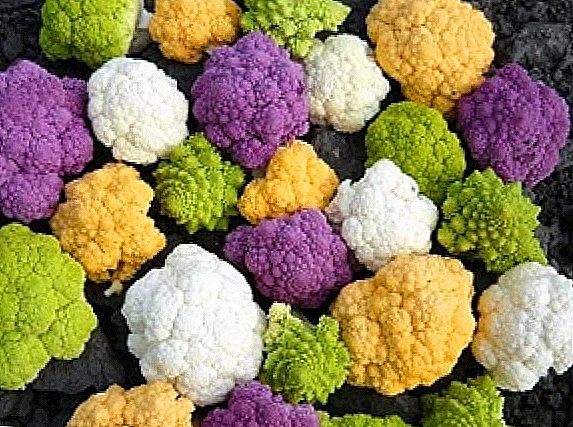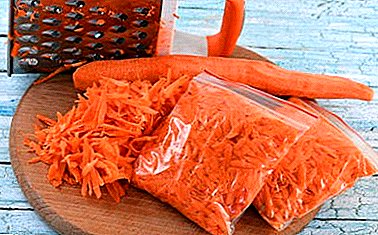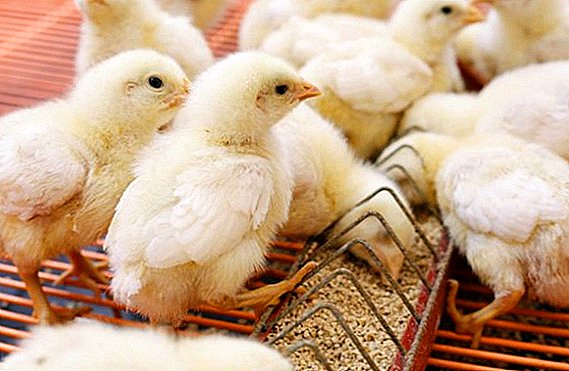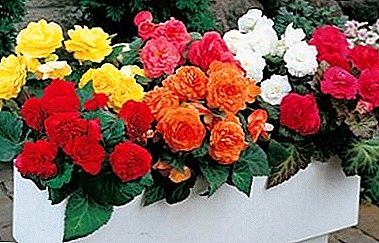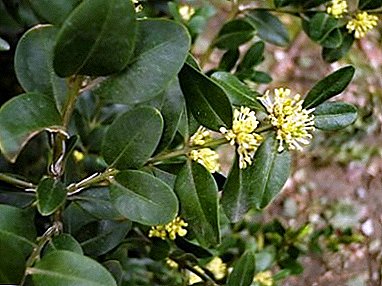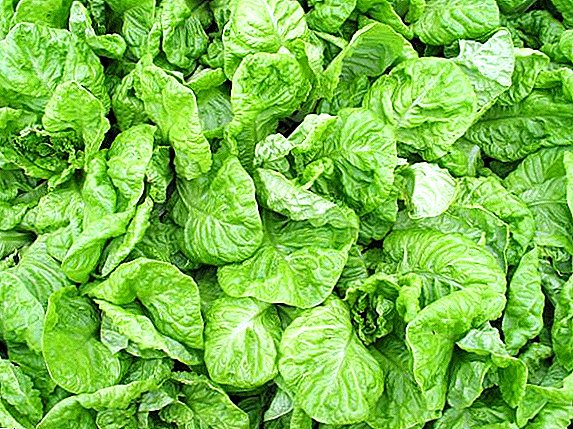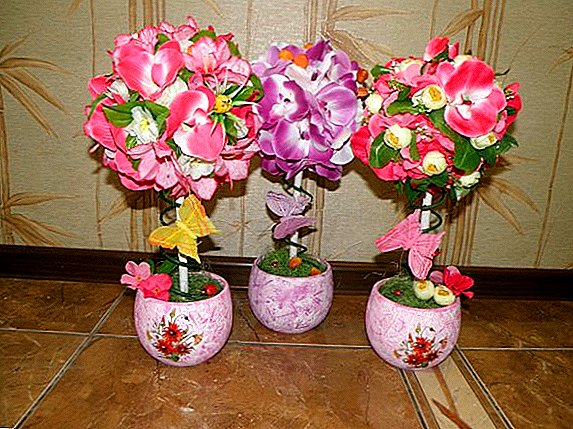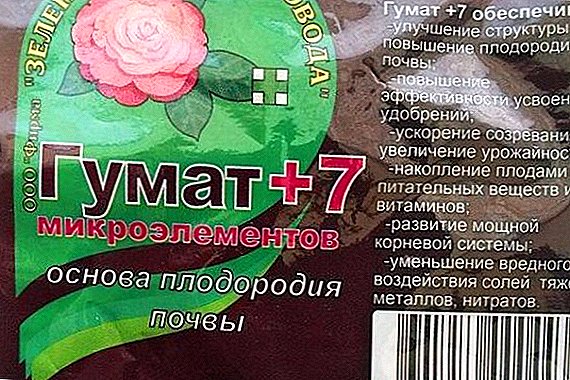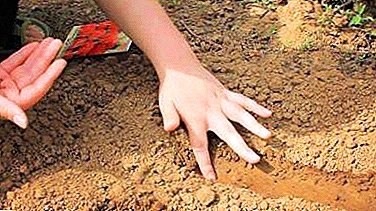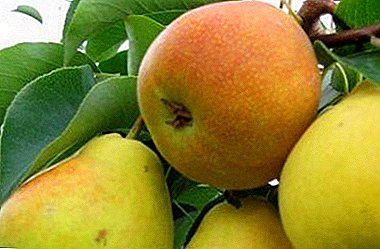
For any gardener his orchard is a matter of pride.
Everyone wants to add something new to the already existing fruit crops in order to please their loved ones with juicy and sweet fruits.
One of the most popular garden trees today is the pear.
Through the efforts of breeders, there are many varieties of this plant, one of which - grade of pear Cathedral, rightly causing interest among gardeners - a full description, description of the variety and photo of the fruit later in the article.
What kind is it?
 The pear belongs to the Rosaceae family. This family includes many fruit and berry crops. Inflorescences thyroid or in the form of a brush.
The pear belongs to the Rosaceae family. This family includes many fruit and berry crops. Inflorescences thyroid or in the form of a brush.
Pollinated by insects or wind. Pear cathedral refers to skoroplodny table grade.
Ripening occurs summer early August. Differs in regular fruiting.
Summer varieties include Rossoshanskaya beautiful, Carmen, Krasulya and Skorospelka from Michurinsk.
Breeding history and breeding region
The Cathedral Pear was bred at the Moscow Agricultural Academy (ICCA). The authors of the variety are breeders S.P. Potapov and S.T. Chizhov. This variety was obtained by crossing two varieties - Forest Beauty and the hybrid "Forest Beauty with"Duchess Thigh".
Bred for breeding in Central striphowever, due to frost resistance, it can even grow in temperate northern regions. Passed a state test in 1990, and in 2001 - included in the State Register in the Central Federal District.
Pear "Cathedral": a description of the variety and photos
Tree reaches average height. Krone of the correct conical shape. Density - from medium to large. The bark is smooth, gray. Predominantly straight branches are directed upwards, not very often located. Fruits, mainly on annual shoots.
 Shoots rounded, straight, reddish-brown, slightly pubescent. The leaves are green, smooth, medium to large.
Shoots rounded, straight, reddish-brown, slightly pubescent. The leaves are green, smooth, medium to large.
Oval-shaped, medium-pointed, concave, at the edges there are fine teeth. Blooms cupped large flowers in white.
The fruit of the pear "Cathedral" medium size or lower weighing from 110 to 130 g
Pear-shaped regular shape, with tubercles on the surface, greenish-yellow color. At full ripeness, the color can change to a light yellow with a reddish blush.
The stem is of medium length, curved. The heart is small, rhombic, with small closed chambers. In fruits ripen dark brown egg-shaped seeds. The flesh has a sweet and sour taste, white, fine-grained, medium density.
Great taste demonstrate varieties of pear Krasnobokaya, Lada, Nursery and Ilyinka.
Full characteristics of the properties of pear grade "Cathedral":
| Ssotav | amount |
|---|---|
| Dry matter | 16% |
| Sakharov | 8,5% |
| Acids | 0,3% |
For more information about the variety and see the “Cathedral” pears can be seen in the photo below:



Specifications
The fruits are harvestable during August, but, like most summer varieties, stored for long, no more than two weeks. The transportability of fruits is average. Variety pears "Cathedral" is great for fresh consumption.
In future it is better to harvest in the form of dried fruit, for the subsequent preparation of compotes. In the raw form of the fruit can be cooked excellent jam or compote.
It tolerates frost well. Regular fructification which is one of the advantages of this variety. Also the grade possesses highly resistant to scab. The yield is about 85 centners per hectare, on average from each tree 35 kg. Fruiting begins already in 3-4 year.
High yields are also different in memory of Zhegalov, Muscovite, Otradnenskaya and Autumn Yakovlev.
Planting and care
 Cathedral Pear very sensitive to the ground. The best option for planting would be fertile sandy chernozem soil. If the area is dominated by loam or sand, in this case it is especially important to apply fertilizer annually.
Cathedral Pear very sensitive to the ground. The best option for planting would be fertile sandy chernozem soil. If the area is dominated by loam or sand, in this case it is especially important to apply fertilizer annually.
It is very undesirable to plant a wet area with stagnant groundwater. If, nevertheless, it is decided to do this, then it is necessary to plant it on a specially prepared hill. Alternatively, drainage can be prepared around the landing site.
When planting a seedling can not be too deep, root neck should be 5 cm above ground level. Pear another pear pollinator is neededtherefore it is better to acquire it immediately by planting a second sapling not far from the first.
Pollinators for pear varieties "Cathedral": Children; Lada; Chizhovskaya.
In the landing hole It is necessary to add organic fertilizer (humus, humus.) If this is not done, the tree will slowly grow, become weaker and more susceptible to disease.
Other fertilizers can be used instead of humus:
| Fertilizer | amount |
|---|---|
| Superphosphate | 1 kg |
| Phosphoric Flour | 1.5 kg |
| Sulfuric Potassium | 150 g |
| Wood ash | 800 g |
| Ammonium nitrate | 80 g |
 In the future, the tree will also need additional feeding, the frequency of which depends on the soil.
In the future, the tree will also need additional feeding, the frequency of which depends on the soil.
Fertilizing is done on fertile soils if a visual inspection of the tree indicates its expediency. If the soil is poor, then annual feeding is necessary. Mineral fertilizers are used for this purpose.
Approximate amount of fertilizer per 1 m² of cultivated area:
| Fertilizer | amount |
|---|---|
| Superphosphate | 40-50 g |
| Potassium sulfate | 20-25 g |
| Ammonium nitrate | 15-25 g |
| Potassium chloride | 15-20 g |
| Urea | 10-20 g |
| Wood ash | 700 g |
| Ammophos | 70-80 g |
IMPORTANT! If fertilizing is done in the fall, it should not contain nitrogen!
 For the survival of the tree is sometimes recommended in the first year of flowering to tear 80% of the flowers. In subsequent years, some gardeners do the rationing of the crop.
For the survival of the tree is sometimes recommended in the first year of flowering to tear 80% of the flowers. In subsequent years, some gardeners do the rationing of the crop.
For this they pick off half of the newly born fruit. As a result, the remaining fruits become larger and sweet when ripe. It is also believed that because of this, the tree will better tolerate the winter.
Pruning pears of the Cathedral is best done in April, before bud break. Circumcision aims to improve the quality of the fruit and protect the tree from diseases.
For such a procedure, there are several rules:
- The branch is cut at the very base (no hemp).
- Branches on the ground should be removed.
- Only weak shoots are cut.
- You can delete no more than 14 of the total number of branches.
- At a young sapling, before planting, the branches are cut to 1/3.
Watering a pear is enough once a week., 1 bucket 2 times a day for each tree. During the fruiting period, the amount of watering should be increased, as in the case of drought.
The lack of moisture threatens significant crop losses not only this year, but also next year. But after collecting the fruit watering should stop. An exception can only be a drought at the end of August and September.
Diseases and pests
 When breeding a pear cathedral, one should keep in mind the probability of infection of certain types of diseases:
When breeding a pear cathedral, one should keep in mind the probability of infection of certain types of diseases:
- monilioz;
- cytosporosis;
- black cancer.
Pear of this variety little prone to moniliosis and related rotting. But if it did happen, it’s necessary remove all affected fruit from both the tree itself and the soil.
The source of infection with moniliosis is the fruits that remained on the branches in the winter and hung there until spring. If they have cracks, then there is a high probability of infection.
Therefore, from pears hanging on the branches from last year, you need to get rid of as soon as possible. To avoid cracking fresh fruits that may also become infected, you need to monitor soil moisture during the season.
The likelihood of moniliosis is significantly lower if the crown of the tree is well ventilated.
For prevention, it is recommended to spray the tree with a solution of urea (5-7%). To avoid burns, this should be done before bud break.
Other means may be used:
- iron or copper sulphate;
- manganese solution;
- Bordeaux mixture.
 Cytosporosis can only affect a weakened tree.. Manifested in certain areas of the bark, which gradually begin to dry out.
Cytosporosis can only affect a weakened tree.. Manifested in certain areas of the bark, which gradually begin to dry out.
At the same time on the affected areas are clearly visible black rough points - spores of the fungus, the pathogen.
Whole branches may be affected. In the fight against cytosporosis, it is necessary to cut and burn all diseased branches.
If a tree trunk is affected, it must be treated with copper (2%) or iron (3%) vitriol. To do this, dilute 20-30 g of one of the drugs in a liter of water.
Using a knife, completely clean the area of the spread of the fungus, then disinfect with the prepared solution. Wounds should be smeared with garden pitch. The best prevention of this disease is proper care: timely feeding and cutting.
Black cancer - A very dangerous fungal disease, leading to the death of the entire tree. The disease is most common in southern areas with a warm climate. First, red-brown spots appear on the leaves, which gradually grow. Sick leaves on the branches do not hold for a long time and soon fall down.
On fruits, the presence of the fungus manifests itself in the form of rot, just before maturation. First, the fruit turns brown, gradually darkens and finally dries out.
The affected bark signals a red-brown spot, as on the leaves. Next, the lesion grows, and cracks are formed between the patient and healthy tissue.
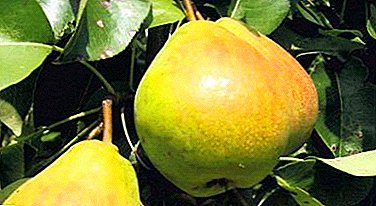 With the defeat of the leaves the most effective means of combating black cancer is Bordeaux mixture, which should be sprayed after flowering.
With the defeat of the leaves the most effective means of combating black cancer is Bordeaux mixture, which should be sprayed after flowering.
Infected stem subject cleaning and processing of copper or iron sulphate solution.
Affected leaves and fruits must be destroyed. (burned), even if they are on the ground. Black cancer usually affects weakened trees.
The absence of various pests, reliable protection against sunburn, compliance with agricultural engineering will significantly reduce the likelihood of infection.
ATTENTION! Hares and some rodents can damage the bark of a tree, especially during the winter (hungry) period. To avoid this, it is necessary to wrap the lower part of the trunk with a special material that must pass air.
If it was not possible to acquire such material, then for this purpose quite suitable for ordinary nylon pantyhose.
In addition to protection from winter pests, they will perform the function of insulation. Although the cathedral variety and has good frost resistance, but sometimes there are severe and at the same time snowy winters. If the tree is young, then such a measure would not be superfluous.
Good frost resistance also have: Rogneda, Rossoshanskaya beautiful, Yakovlevskaya and Wonderland.
So, the pear of the Cathedral has a number of undoubted advantages.

- High frost resistance.
- Excellent yield.
- Annual fruiting.
- High resistance to most fungal diseases.
The disadvantages of this type include only a small shelf life and relatively small size of the fruit. However, those who have a cathedral pear in the garden never regret their choice.
The tree is suitable for cultivation in almost any region of Russia (except the far north). If you comply with all the conditions of care, the tree will annually please its owner with tasty and healthy fruits.


